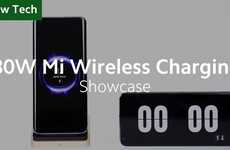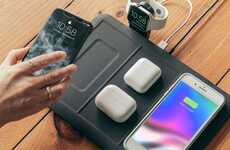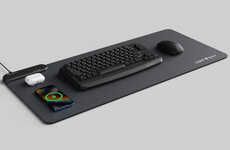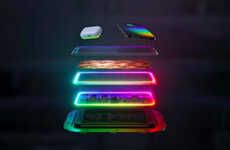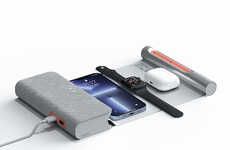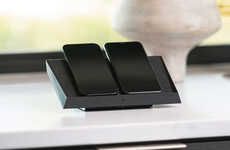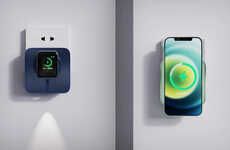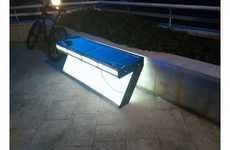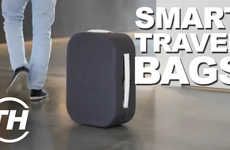
This Wireless Charging System Can Charge 40 Smartphones at a Time
Rahul Kalvapalle — May 2, 2014 — Tech
References: kaist.ac.kr & gizmag
Researchers at the Korea Advanced Institute of Science and Technology (KAIST) developed an incredible wireless charging system capable of charging around 40 smartphones simultaneously from a distance of 5 meters.
The contraption, called the Dipole Coil Resonant System, uses magnetic fields to transfer energy rather than physical charging cables. It is based on the Coupled Magnetic Resonance System introduced by MIT researchers in 2007. The Korean-developed system is an improvement on the MIT system however, in that it delivers more power at shorter distances. It is able to transmit 471 Watts of power from a distance of 4 meters, and 1403 Watts from a shorter distance of 3 meters.
While the wireless charging system has demonstrated its compatibility with smartphones, it can deliver enough juice to power larger devices like TVs and computers.
The contraption, called the Dipole Coil Resonant System, uses magnetic fields to transfer energy rather than physical charging cables. It is based on the Coupled Magnetic Resonance System introduced by MIT researchers in 2007. The Korean-developed system is an improvement on the MIT system however, in that it delivers more power at shorter distances. It is able to transmit 471 Watts of power from a distance of 4 meters, and 1403 Watts from a shorter distance of 3 meters.
While the wireless charging system has demonstrated its compatibility with smartphones, it can deliver enough juice to power larger devices like TVs and computers.
Trend Themes
1. Wireless Charging Technology - The development of wireless charging systems like the Dipole Coil Resonant System opens up opportunities for businesses to create more convenient and efficient charging solutions for various devices.
2. Simultaneous Charging - The ability to charge multiple smartphones simultaneously from a distance of 5 meters presents a disruptive innovation opportunity for businesses providing charging solutions in public spaces such as airports, restaurants, and coffee shops.
3. Increased Power Transfer - The improvement in power delivery of the Korean-developed wireless charging system provides an opportunity for industries such as automotive and electronics to explore the integration of wireless charging technology into their products.
Industry Implications
1. Electronics - The electronics industry can benefit from the advancement in wireless charging technology by incorporating it into their devices, offering consumers a hassle-free charging experience.
2. Automotive - The automotive industry can explore the integration of wireless charging technology in electric vehicles, enabling convenient and seamless charging for EV owners.
3. Hospitality - The hospitality industry can leverage simultaneous charging capabilities to provide convenient charging solutions for guests in hotels, conference centers, and other public spaces.
2.4
Score
Popularity
Activity
Freshness



